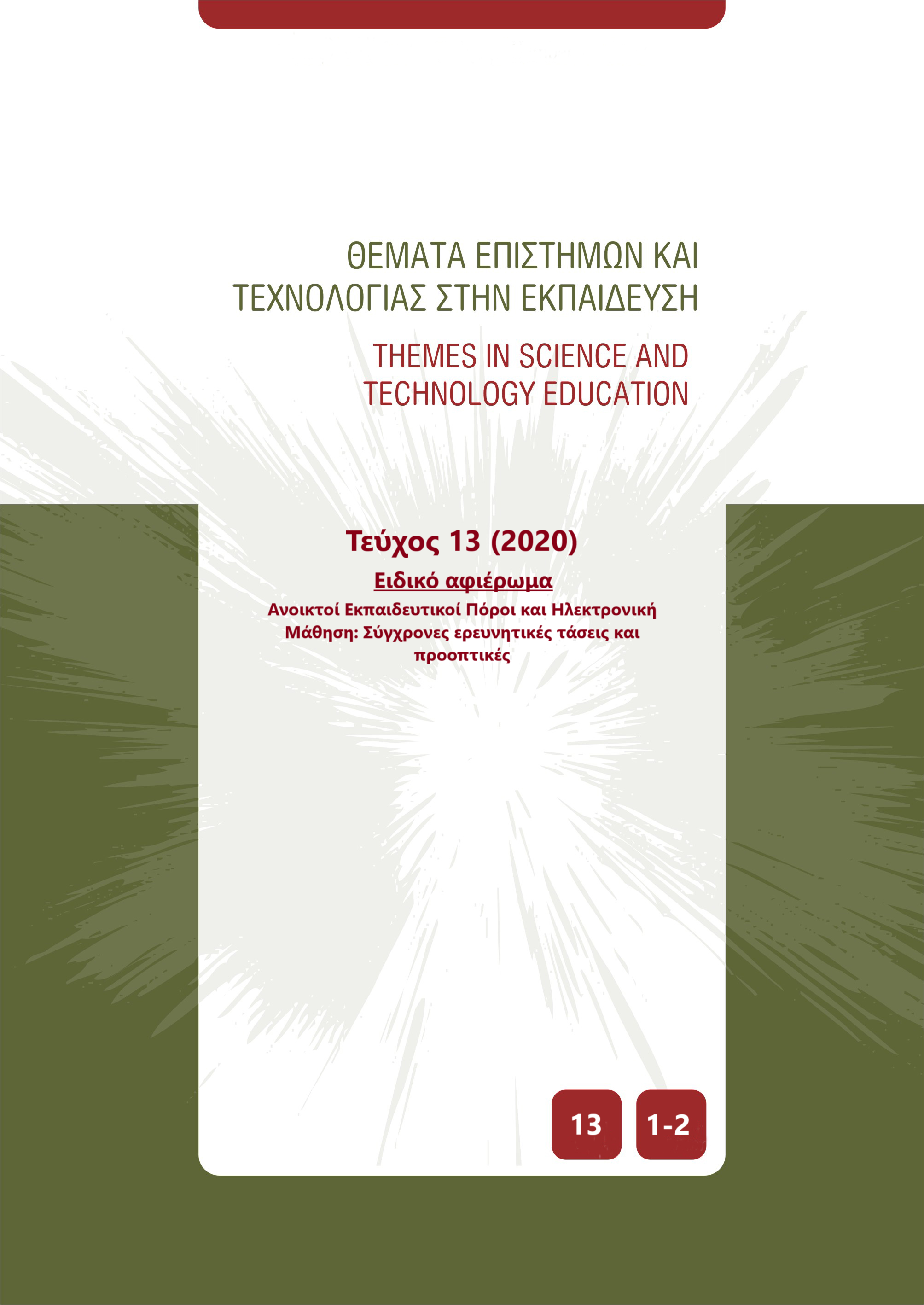Εναλλακτικές προτάσεις ταξινόμησης των Μαζικών Ανοιχτών Διαδικτυακών Μαθημάτων MOOCs
Abstract
Τα Μαζικά Ανοιχτά Διαδικτυακά Μαθήματα (MOOCs) αποτελούν ένα παγκόσμιο εκπαιδευτικό φαινόμενο που εξελίσσεται συνεχώς με αποτέλεσμα την εμφάνιση διαφορετικών ειδών MOOCs και εναλλακτικών προτάσεων ταξινόμησής τους. Η παρούσα βιβλιογραφική επισκόπηση επιχειρεί να καταγράψει και να αναλύσει τα εναλλακτικά συστήματα ταξινόμησης των MOOCs που κυριαρχούν, προκειμένου να αναδειχθούν τα κριτήρια στα οποία στηρίζονται οι εκάστοτε προσπάθειες κατηγοριοποίησης των μαθημάτων αυτών. Τα αποτελέσματα της έρευνας κατέδειξαν ότι οι εναλλακτικές ταξινομήσεις αναφέρονται σε διαφορετικές πτυχές των MOOCs και επιχειρούν να ταξινομήσουν τα μαθήματα αυτά σε διακριτές κατηγορίες στηριζόμενες σε εναλλακτικά κάθε φορά κριτήρια. Η πλειονότητα των συστημάτων αυτών επιχειρεί να προσεγγίσει τα μαθήματα αυτά από τη σκοπιά των εκπαιδευτών και των παρόχων, χωρίς να δίνεται ιδιαίτερη έμφαση σε αυτούς καθαυτούς τους συμμετέχοντες. Από τα παραπάνω συμπεραίνουμε ότι απαιτούνται ευρύτερες ταξινομικές προσπάθειες που θα καταστήσουν δυνατή την κατηγοριοποίηση των MOOCs από μια ευρύτερη προοπτική και θα κατευθύνουν την περαιτέρω εξέλιξη και αξιοποίησή τους.
Article Details
- How to Cite
-
Χοροζίδης Γ., Καραματσούκη Α., Κουτσάκας Φ., & Καραγιαννίδης Χ. (2020). Εναλλακτικές προτάσεις ταξινόμησης των Μαζικών Ανοιχτών Διαδικτυακών Μαθημάτων MOOCs. Themes in Science and Technology Education, 13(1/2), 117–127. https://doi.org/10.12681/thete.39983
- Section
- Articles






